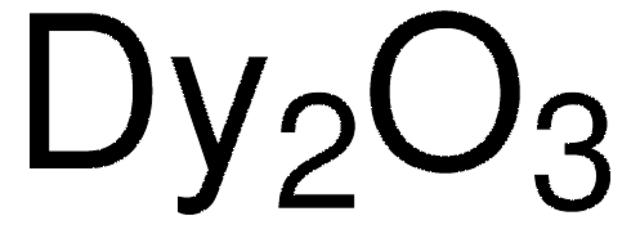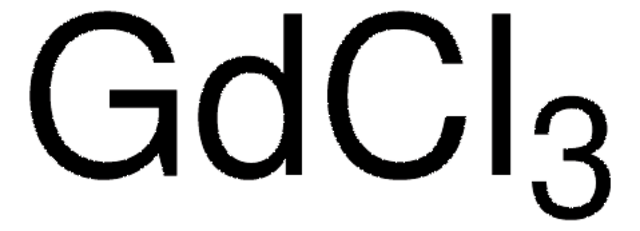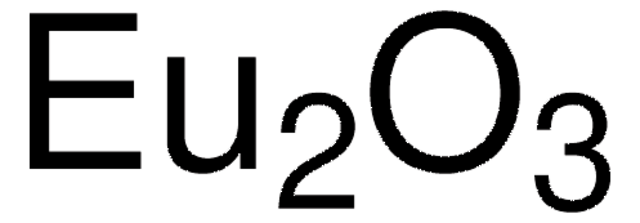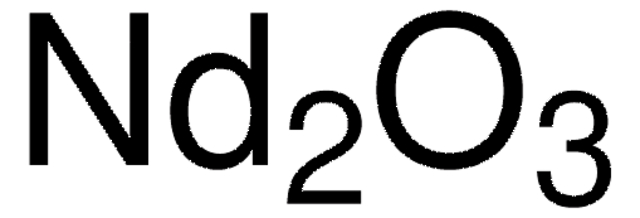637289
Dysprosium(III) oxide
nanopowder, <100 nm particle size, 99.9% trace metals basis
Synonym(s):
Didysprosium trioxide, Dysprosia
About This Item
Recommended Products
Quality Level
Assay
99.9% trace metals basis
form
nanopowder
reaction suitability
reagent type: catalyst
core: dysprosium
particle size
<100 nm
density
7.81 g/mL at 25 °C (lit.)
SMILES string
O=[Dy]O[Dy]=O
InChI
1S/2Dy.3O
InChI key
NLQFUUYNQFMIJW-UHFFFAOYSA-N
Looking for similar products? Visit Product Comparison Guide
Storage Class Code
11 - Combustible Solids
WGK
WGK 2
Flash Point(F)
Not applicable
Flash Point(C)
Not applicable
Personal Protective Equipment
Choose from one of the most recent versions:
Already Own This Product?
Find documentation for the products that you have recently purchased in the Document Library.
Articles
Currently, magnetic nanoparticles (MNPs) are attracting a lot of attention because of the possibility of many novel applications, especially in biomedical research.
Magnetic materials permeate numerous daily activities in our lives. They are essential components of a diversity of products including hard drives that reliably store information on our computers, decorative magnets that keep the shopping list attached to the refrigerator door, electric bicycles that speed our commute to work, as well as wind turbines for conversion of wind energy to electrical power.
The application of magnetism and magnetic materials pervades our modern civilization in the form of electrical power, communications and information storage.
Our team of scientists has experience in all areas of research including Life Science, Material Science, Chemical Synthesis, Chromatography, Analytical and many others.
Contact Technical Service






